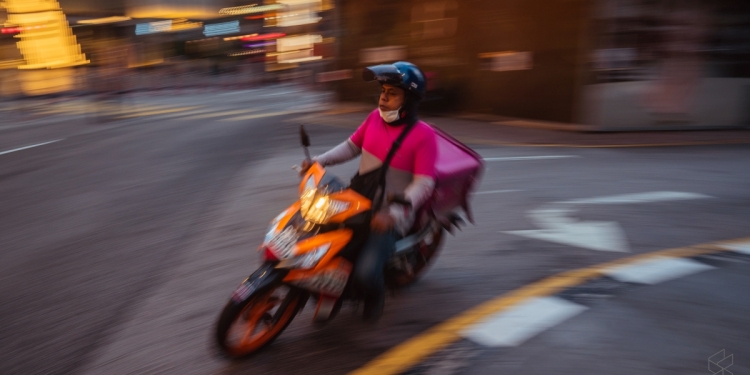Food and parcel delivery rides will soon be required to obtain a Goods Driving Licence (GDL) in an attempt to better regulate pHailing services in Malaysia. This was shared by Transport Minister Datuk Seri Dr Wee Ka Siong during a dialogue session with representatives of eHailing and pHailing associations today.
The requirement is expected to be in force after three pieces of legislation are amended, namely Road Transport Act 1987 [Act 333], Commercial Vehicles Licensing Board Act 1987 [Act 334] and Land Public Transport Act 2010 [Act 715]. The bills will be tabled for debate and approval during the next Parliament meeting.

Dr Wee said the amendments are for the purpose of supervision and setting regulations, and the views of various parties of interest will be taken into account. He added that the GDL requirement was not meant to burden delivery riders but to enable the Ministry of Transport (MOT) to keep track of their numbers.
According to JPJ’s website, GDL costs RM20 per year which is the same rate as PSV licence for eHailing drivers. GDL is a licence typically required for individuals driving commercial registered vehicles for transporting goods. This includes lorries, articulated lorries and panel vans. At the moment, the minimum age for GDL licence holder is 21 years old. Dr Wee said the upcoming amendments will lower the eligible age for GDL to not less than 18 years old, which will enable more youths to work as pHailing riders.
The minister added that the MOT and relevant agencies will monitor the pHailing service to ensure that the sector remains competitive. He said the supervision is aimed at protecting the welfare of riders or drivers of the vehicles involved, and the terms will include insurance protection requirements for riders.
While the intention of the ministry is to improve regulation for pHailing, the new requirements could be seen as barriers to recruit new riders and there’s a likelihood of riders dropping off from the platform. Regulatory requirements are among the challenges faced by eHailing providers to add more drivers to fulfill increased demand.
According to Grab, the regulations introduced in 2019 had resulted slower response time for new drivers to be onboarded to meet the sharp increase in demand. New drivers were required to fulfill various requirements such as training, exams at driving schools, inspection, purchasing insurance and submitting documents to various government agencies to processing. It added that these requirements place a structural limit on the speed at which new driver-partners could come on board.
Related reading
- This is how Grab responded after users complained of expensive delivery fees today
- [ UPDATE ] Grab: Viral post of GrabFood riders’ lower earnings is because of a “technical issue”
- Here’s why food deliveries are taking longer in KL after the reopening of all economic sectors
- Why is Grab so expensive now? | Let’s Talk About #96








